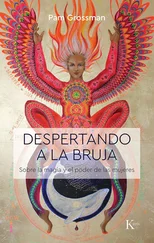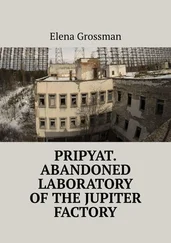Darren added a level that was mostly empty space with two lines of pillars running through it. Then he added a level where the walls spelled DARREN RULES, followed by a pentagram level, then a stick-figure level, then a rough map of our high school, then an attempt to mimic a Nagel print, then a giant ampersand that the little ampersands (we started calling them ampers) ran around in, and finally a stylized picture of a penis. Simon added a class of command that printed more text beneath the map, to say things like “I don’t recognize that key” or “You feel cold air moving” or “The walls here are covered with rotting tapestries,” and invented without thinking about it the voice of the game, which skipped around between first and second and third person depending on what you were doing—the hidden narrator, the companion, the adjudicator behind the curtain. “You smell burning.” “Suddenly you yearn for your distant homeland.”
The maze didn’t have a name, but eventually Simon added text that would appear when you ran the program, just so the start-up would feel less abrupt:
Welcome to the Tomb of Destiny.
Beware Adric!
HJKL to move.
Who was Adric? Why was he dead? Why was he interred in such an elaborate underground complex, and by whom? And what was a “tomb of destiny”—did destiny die and get buried? Never mind; it was the kind of thing one wrote. Realms didn’t have a story. Not that it needed one to work. What’s happening in Space Invaders is pretty clear by the time you’re done reading the title. You live out your brief lonely heroic destiny in full understanding of the stakes, sliding an artillery piece back and forth while death creeps down from the sky in lateral sweeps. For the moment, no one needed to say anything more.
But eventually we couldn’t help ourselves. We emptied out the school library’s stock of fantasy and science fiction, from Poul Anderson to Roger Zelazny, taking notes, harvesting characters and story lines for later, irrespective of genre or period. It was all one contemporaneous fever dream. For underinformed fourteen-year-olds (or thirteen—Simon skipped fourth grade) it was a mass of curious ideas. Piers Anthony’s Blue Adept first suggested the idea of dating a robot. Our consensus was that that was probably the best option for any of us, once it became possible.
“Robot, probably,” was Simon’s opinion. “If not, then alien. If not, then human.” We all nodded.
“Or dragon,” added Lisa.
I saw the way Lisa looked at Simon sometimes, usually when he was working on a problem, and I wondered why. I didn’t know exactly why any girl thought anything. A girl’s attention was like the mind of an alien in an Arthur C. Clarke novel—shattering, sublime, unintelligible. I wasn’t sure if “cool” was an idea that registered for Lisa. Did she have posters on her wall at home, a picture inside her locker—how did it work, exactly?
For the rest of us, cool was a deep fantasy, the stuff of Heavy Metal dreams, marble cities, adventure, fate, ancient curses, reaching its extreme limit in the lonesome, otherworldly hauteur of Elric of Melniboné. It wasn’t possible to be cooler than Elric. I think there was a tacit agreement between them that Simon and Darren were in some way both Elric, which was as close as they could safely get, maybe, to saying they loved each other.
Darren was cool because he was tall and bitter and had learned how to smoke and was confident, and Simon was cool I guess because when he was thinking really really hard the air around him seemed to warp inward, as though there were a black hole behind his eyes. Or because he didn’t give a shit about anything but what we were working on, and he had a way of making it seem like the problem that everything was staked on. He’d already found out what he really wanted—to carve something out behind the command line that answered his feeling that he was born in the wrong place in the wrong body. But this also made you wonder whether he gave a shit about any of us, and then you started trying to figure it out and couldn’t stop. It made him a little bit like a dragon. But Lisa started dating a college freshman she met at Brandeis, where she had to take math, because I guess no one at our school was qualified to teach her. I learned that it was possible to hate reality as much as Simon did.
Which made me ask, late one evening, dizzy with caffeine and fatigue, what if you went up and up and up, climbing torch in hand, up the cramped spiral staircases, makeshift ladders, broad processional ramps, kicking aside bones and splashing through curtains of water dripping downward, up and up, until the orange torchlight or the blue-green glow of phosphorescent algae gave way to the pale gold of sunlight on the top few steps of the topmost staircase? Or until you smelled fresh air and looked up to see sky instead of stone blocks, and you were out in the world you started in? Where were you? What did you do then? The simplest answer, apart from just ending the game, was to make a metamap, a surface country, where you could walk overland between dungeons. There wasn’t any new programming necessary to make this one; it was just a new map built on a larger scale. There were multiple stairways leading down to different dungeons, but none leading up . This map had a different character set—∼, ∧, and % for water, mountains, and forest spaces. And then the movement rules were altered so you couldn’t move into mountain and river spaces. Just a hack, but it changed what Darren and Simon were doing. Now there was more than just the darkness of Adric’s Tomb, there was a whole world to explore.
Realms map 1.0 was a big, blunt, teardrop-shaped landmass that Darren freehanded in the last fifteen minutes of a Friday study hall. It showed the continent of Endoria and its capital city, Kronus. Endoria sat in the middle of a nameless sea, and had two principal mountain ranges and then a couple of rivers sketched in after the first bell rang. Darren handed it around. Simon and his parents had gone on a summer trip to Israel, and Darren had been to Scotland, plus he’d lived in Iowa until he was eight. Between them they’d seen castles, farmlands, cliffs, ruined temples, and Roman fortresses, along with their own native terrain types—patchy, deciduous groves gradually being claimed by strips of pine tree, subsiding into streams and swamps, fronting onto asphalt. In art class Simon tore off one of a big three-by-four-foot sheet of paper, gray and pulpy, like newsprint, from a giant pad the teacher kept in the room and copied the blobby outline Darren had made.
Over the next week we passed the map around between us and it accrued tiny details. Each time it came back to me it had more tattered edges and creases from being folded and refolded. After a week it was almost illegible, having been written and rewritten. Kronus sat inland at the place where two rivers met, on the border between the southern grassland and the northern forest. Simon put Dwarven tunnels in the mountains, drew elf-haunted forests in the central valleys, and marked the pastoral west with tiny crenellated towers in blue ballpoint—the lands of men. Darren spent way too much time on the extremely detailed walled kingdom of Arrek, in the southeast, ringed by mountains he’d set up for that purpose. Simon aggressively marked out a swath of the northeast as the Plains of the Wind Riders, with no explanation other than a passable sketch of a horse and long-haired rider. The Shadow Marches, the Blackened Lands, Boralia (there was an Old Boralia as well, much larger), Skarg, the Perrenwood, the Bottomless Lake.
A line of dashes, never explained, wandered through the middle of the continent—A road? A tunnel? An ancient wall? Dungeon entrances were marked in black and were found in ruins, mountains, and the very center of the Duskwood. It took Simon and Darren months to translate the map into digital form, improvising ASCII notation as they went. When the continent of Endoria went live, there were fifty-six new dungeons to build and dozens of new monsters and terrain types to consider.
Читать дальше
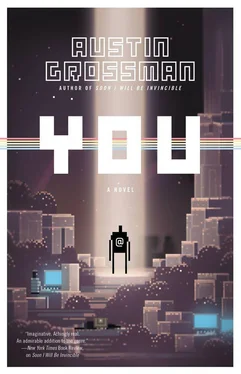
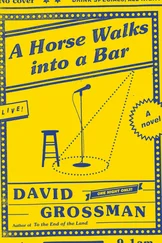

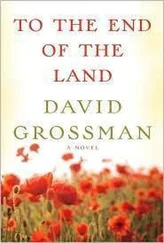

![Ally Carter - [Gallagher Girls 01] I'd Tell You I Love You But Then I'd Have to Kill You](/books/262179/ally-carter-gallagher-girls-01-i-d-tell-you-i-lo-thumb.webp)

